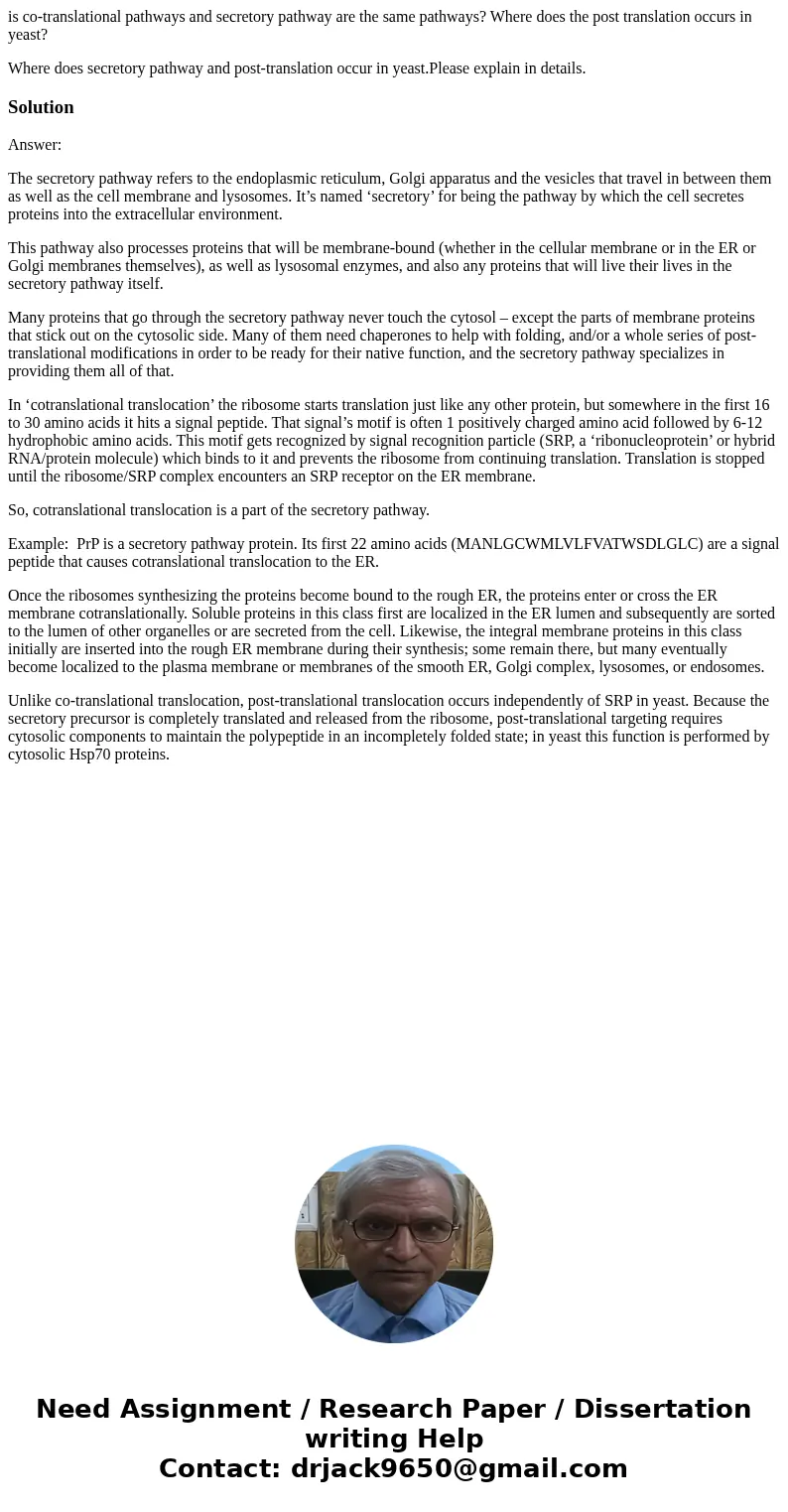is cotranslational pathways and secretory pathway are the sa
is co-translational pathways and secretory pathway are the same pathways? Where does the post translation occurs in yeast?
Where does secretory pathway and post-translation occur in yeast.Please explain in details.
Solution
Answer:
The secretory pathway refers to the endoplasmic reticulum, Golgi apparatus and the vesicles that travel in between them as well as the cell membrane and lysosomes. It’s named ‘secretory’ for being the pathway by which the cell secretes proteins into the extracellular environment.
This pathway also processes proteins that will be membrane-bound (whether in the cellular membrane or in the ER or Golgi membranes themselves), as well as lysosomal enzymes, and also any proteins that will live their lives in the secretory pathway itself.
Many proteins that go through the secretory pathway never touch the cytosol – except the parts of membrane proteins that stick out on the cytosolic side. Many of them need chaperones to help with folding, and/or a whole series of post-translational modifications in order to be ready for their native function, and the secretory pathway specializes in providing them all of that.
In ‘cotranslational translocation’ the ribosome starts translation just like any other protein, but somewhere in the first 16 to 30 amino acids it hits a signal peptide. That signal’s motif is often 1 positively charged amino acid followed by 6-12 hydrophobic amino acids. This motif gets recognized by signal recognition particle (SRP, a ‘ribonucleoprotein’ or hybrid RNA/protein molecule) which binds to it and prevents the ribosome from continuing translation. Translation is stopped until the ribosome/SRP complex encounters an SRP receptor on the ER membrane.
So, cotranslational translocation is a part of the secretory pathway.
Example: PrP is a secretory pathway protein. Its first 22 amino acids (MANLGCWMLVLFVATWSDLGLC) are a signal peptide that causes cotranslational translocation to the ER.
Once the ribosomes synthesizing the proteins become bound to the rough ER, the proteins enter or cross the ER membrane cotranslationally. Soluble proteins in this class first are localized in the ER lumen and subsequently are sorted to the lumen of other organelles or are secreted from the cell. Likewise, the integral membrane proteins in this class initially are inserted into the rough ER membrane during their synthesis; some remain there, but many eventually become localized to the plasma membrane or membranes of the smooth ER, Golgi complex, lysosomes, or endosomes.
Unlike co-translational translocation, post-translational translocation occurs independently of SRP in yeast. Because the secretory precursor is completely translated and released from the ribosome, post-translational targeting requires cytosolic components to maintain the polypeptide in an incompletely folded state; in yeast this function is performed by cytosolic Hsp70 proteins.

 Homework Sourse
Homework Sourse